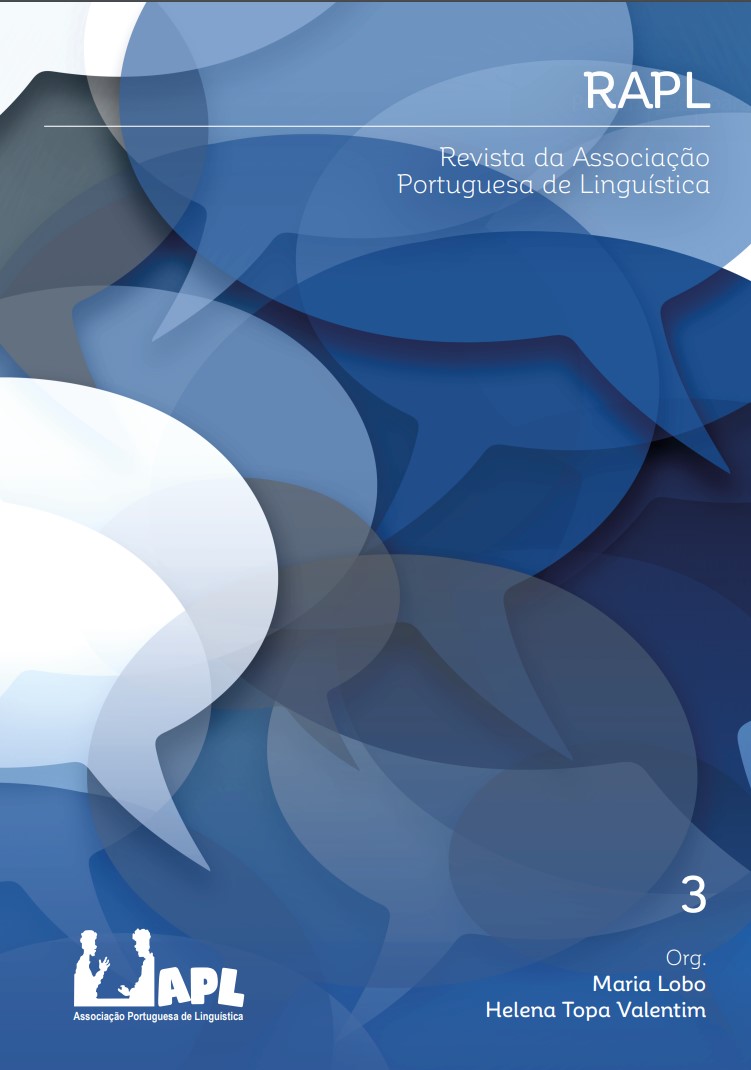Emergence of consonant sandi in European Portuguese: a prosodic approach
DOI:
https://doi.org/10.26334/2183-9077/rapln3ano2017a11Keywords:
sandhi, acquisition, prosodic structure, codaAbstract
In European Portuguese, the domain for sandhi phenomena is the intonational phrase. Unlike the intonational phrase, the phonological phrase has been shown to be only relevant for rhythm and prominence-related phenomena (Frota, 2000, 2014). Fricative voicing between words (casa[ʒb]rancas, casa[ʃp]retas) and ressylabification before vowel-initial words (casa[zɐ]marelas) occur within the intonational phrase. In this study, we considered spontaneous productions of a Portuguese child (Luma), aged 2;04-4;00, to examine the acquisition of external consonantal sandhi. The data show that sandhi production varies according to the segmental (C#C, C#V, CFric, CVib, CLat) and prosodic context (clitic, prosodic word, position in prosodic structure). The data further confirm that sandhi occurs within the intonational phrase, supporting the analysis proposed for the adult grammar. This study contributes to the understanding of the relationship between the acquisition of the prosodic structure and the acquisition of sandhi phenomena.
Downloads
Downloads
Published
How to Cite
Issue
Section
License
Copyright (c) 2017 Alexandra Malho, Susana Correia, Sónia Frota

This work is licensed under a Creative Commons Attribution-NonCommercial-ShareAlike 4.0 International License.
Authors retain copyright and concede to the journal the right of first publication. The articles are simultaneously licensed under the Creative Commons Attribution License, which allows sharing of the work with an acknowledgement of authorship and initial publication in this journal.
The authors have permission to make the version of the text published in RAPL available in institutional repositories or other platforms for the distribution of academic papers (e.g., ResearchGate).




